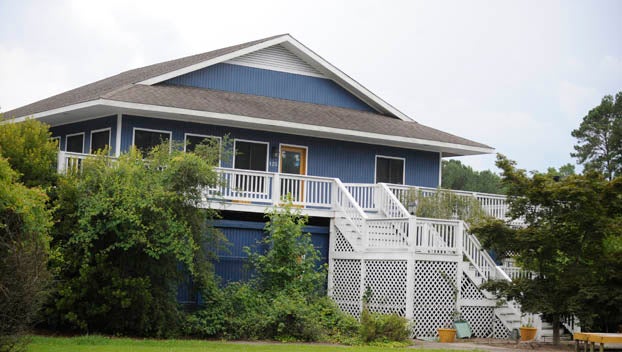Timing and placement key to healthy plants
Published 6:49 pm Thursday, September 6, 2018

- FLOWERING SPRING: Flowering bushes should not be pruned before they flower in the spring—it’s pretty much a guarantee there won’t be any flowers to admire on that bush. (Vail Stweart Rumley/Daily News)
In January, many eastern North Carolina homeowners were shaking in their shoes — not only because the below-freezing temperatures plagued the area for two weeks, but because such weather can be disastrous to many plants, fruiting trees and flowering bushes that normally thrive in the area.
Come spring, many people found their landscaping fears realized. Figs, gardenias, camellias and others fell prey to the cold snap that sent the region’s hardiness zone plummeting from a strong 7B to a 6B. Property owners and nurseries alike felt the bite.
“That will drive the landscape trends for about two years,” said Gene Fox. “When you look at it that way, it changes the landscape of our entire industry in our area.”
Fox is the area agriculture and consumer horticulture agent for Beaufort, Hyde, Tyrrell and Washington counties; he’s also a weekly contributor to the Daily News’ homes section with a column focusing on gardening and landscaping advice specific to this area.
Many people were unsure how to help their plants recover in the aftermath of the cold spell earlier this year, but Fox said it’s best to wait and see, when it comes to the cold.
“If you do experience a winter kill, the best thing to do is to wait until around June to see whether you need to replace that plant or not,” he said, adding that some plants may be beyond hope, but others will survive and thrive if treated correctly. “A winter kill stresses it out even though it’s dormant. If you come in in March and try to trim that new growth, you’ve stressed it out even more.”
Fox said placement is one of the keys to helping a plant survive a cold snap — the closer to a structure and more sheltered a plant is, the greater the chance for revival. A plant that didn’t survive the January cold, shouldn’t be replaced in that same spot.
“There are two main things you can’t do to keep your plants as healthy as possible: right plant, right place; and maintain the pH within the correct range,” Fox said. “When you replace something, you certainly don’t want to put it back in the same place.”
While the cold might have burned off this year’s flowering buds (as they’re already present on the plant even in the dead of winter), another way to prevent die-off is to prune at the right time. According to Fox, that time is over for the year.
“You don’t want to prune trees or bushes after Aug. 1, going into the fall, because it causes a growth response. This growth response won’t have enough time to harden off against cold weather which at a minimum would cause tip die-back but could cause severe damage,” he said. “A better time to prune those would be late January into late February. If it’s a spring flowering bush do not prune until after the flowers have bloomed, such as an azalea or Loropetalum. Any spring flowering bush, if you prune it prior to bloom, you won’t have any flowers.”
The same goes, in a sense, for warm-season grasses. Fertilizing warm-season grasses right now also stimulates a growth response that can ultimately cause a lot of harm if it gets really cold.
“It’s so busy growing, it doesn’t recognize it should be slowing down,” Fox said.
What gardeners can do right now is send off a soil test to the North Carolina Department of Agriculture. They are currently free and available for pick-up at the extension office on Airport Road in Washington. From Dec. 1 through March 31, the price goes from zero to $4 per sample.
“Now is the time to take soil sample to get them back in a timely fashion,” Fox said. “They process between 450,000 and 550,000 of those a year. They process 90 percent of them in those four months. They crank out a great report with recommendations and tell you exactly what your plants are going need.”
Another tip from this professional horticulturist is about everyone’s favorite fall flower: chrysanthemums. With a potted mum purchased and planted in its full flowering glory in November only has about a 50-50 chance of survival over winter, as opposed to those purchased and planted in the spring.
“It’s all about getting that established root system,” Fox said.





